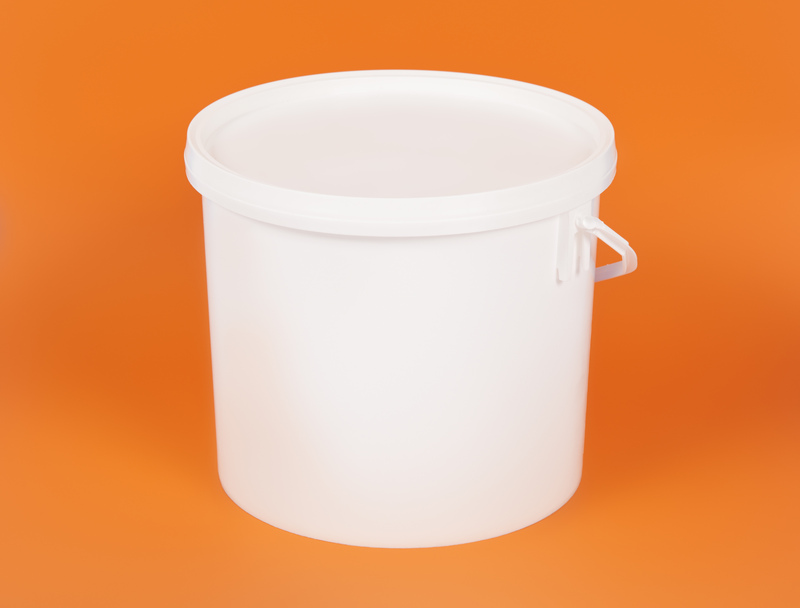Simple Steps to Packing When Moving Your House
Posted on 25/06/2025
Simple Steps to Packing When Moving Your House
Moving house can be an overwhelming experience, but packing doesn't have to be the most stressful part. With a strategy and a few simple steps, you can make the whole process much smoother and more efficient. In this comprehensive guide, we'll cover everything you need to know about packing efficiently for a move, from planning and organizing to packing tips and expert advice.

Why Proper Packing Matters When Moving House
Packing for a move isn't just about putting things into boxes. It's about protecting your belongings, making your move more efficient, and ensuring your items arrive safely in your new home. Having a plan helps you:
- Reduce the risk of damage to your belongings.
- Save time during the unpacking process.
- Decrease stress and chaos on moving day.
- Keep track of all your possessions.
Preparation: The Foundation of an Easy Move
Before you even start packing, there's some crucial groundwork you should lay. Taking the time to prepare properly will make every other step much easier:
- Declutter your home: Sort through your belongings and donate, sell, or throw away anything you no longer need. This reduces the amount you have to pack and move.
- Gather packing supplies: Gather plenty of boxes in various sizes, packing tape, bubble wrap, markers, and packing paper.
- Designate a packing zone: Set up a dedicated area where you can organize boxes and supplies, and pack items.
- Make a packing schedule: Create a timeline to pack each room, allowing yourself enough time to finish without feeling rushed.
Best Supplies for Packing When Moving House
Using the best supplies will save you time, protect your items and help you stay organized. Here's what you'll need:
- Sturdy moving boxes: Quality boxes keep your items safe and stack well in the moving truck.
- Bubble wrap and packing paper for fragile items.
- Packing tape and a dispenser for quick sealing.
- Permanent markers for labeling boxes.
- Plastic wrap for wrapping furniture and appliances.
- Old blankets or moving pads for extra protection.
Steps for Packing Your House for Moving
Ready to get started? Here's a room-by-room, step-by-step process for packing when moving house that anyone can follow.
1. Start Early with Non-Essentials
Begin by packing up items that you won't need before you move. This might include:
- Out-of-season clothes and shoes
- Books you don't read daily
- Holiday decorations
- Collectibles and decor items
- Assigned guest room items
Tip: Label boxes as you go, noting the room and a brief description of the contents.
2. Pack Room by Room
Focusing on one room at a time helps you stay organized and makes unpacking easier. Follow these steps for each room:
- Clear the clutter before packing.
- Pack similar items together (for example, all kitchen utensils in one box).
- Wrap fragile items individually using bubble wrap or packing paper.
- Fill gaps with towels or clothing to prevent shifting during transport.
- Seal and label each box clearly, including a note if it contains fragile items.
3. Use Smart Packing Techniques
- Heaviest items on the bottom: Stack lighter items on top for stability.
- Keep boxes under 20 kg (or about 44 lbs) to make them easier to lift and carry.
- Disassemble furniture where possible and keep screws/bolts in labeled plastic bags taped to the item.
- Leave clothing in drawers, but secure the drawers with tape or plastic wrap.
- Use suitcases for heavy or fragile items, like books or glassware.
4. Label Everything Thoroughly
When you arrive at your new home, you'll be grateful for clear, detailed labels on every box. Label each box with:
- The room it belongs in
- A summary of its contents
- Whether it's fragile or needs to be kept upright
This will make unpacking (and finding essentials) much easier.
5. Pack an Essentials Box
The night before your move, pack a box with items you'll need right away. Some households call this the "Open First" box. Include:
- Toiletries and a change of clothes
- Basic cleaning supplies
- Snacks and water
- Phone chargers
- Important documents (passports, lease, contracts, etc.)
- Medications and first-aid kit
- Pet supplies if you have pets
Simple Packing Tips for Moving Your House
Streamline your move with these packing tips for moving your house:
- Color-code boxes with stickers or tape by room for easy identification.
- Wrap breakables in clothing or towels to save space and protect items.
- Use small boxes for heavier items and larger boxes for lighter, bulky items.
- Keep hardware for furniture in sealable bags and tape to the matching furniture piece.
- Photograph electronics setups and cords before disassembling.
- Write "This Side Up" and "Fragile" where necessary.
What to Plan for the Final Day
On moving day itself, make your life easier by packing a final-day kit:
- Cleaning supplies for last-minute touch-ups
- Toolkit for furniture assembly/disassembly
- Snacks, drinks, and cash for tips or emergencies
- Directions to your new home
Common Packing Mistakes to Avoid When Moving House
Prevent hassle by steering clear of these common packing mistakes:
- Overfilling boxes - risking breakage, especially with fragile or heavy items.
- Failing to label or not using detailed enough labels.
- Leaving packing to the last minute - always start as early as possible.
- Packing hazardous or perishable items with your household goods.
- Using old or flimsy boxes that can break during transport.
Eco-Friendly Packing Tips
If you want to pack sustainably, consider these options:
- Reuse boxes from local stores or friends.
- Rent plastic moving crates - they're sturdy and reusable.
- Use towels, linens, and clothing for padding rather than buying new packaging material.
- Recycle or donate supplies after your move.
Unpacking After the Move
Once you arrive in your new home, follow these essential steps for a stress-free unpacking experience:
- Start with the essentials box - unpack it first to get settled quickly.
- Assemble beds and furniture next so you have a place to relax and sleep.
- Unpack room by room, starting with the kitchen and bathrooms.
- Break down boxes and clean as you go to avoid clutter piling up.
- Take your time - you don't have to unpack everything on day one.
Expert Resources: Hiring Movers or DIY?
When relocating your house, you have the option to hire professional movers or handle everything yourself. Consider the following:
- If hiring movers, ask about their packing services--they may offer full or partial packing help.
- Get written quotes from at least three companies for the best rates.
- Check online reviews and insurance coverage for your peace of mind.
- For a DIY move, enlist friends and family to help and ensure you have the right vehicle and tools.
Moving with Children or Pets
Make your move with kids or pets less stressful by:
- Packing their favorite toys and essentials in a separate, easy-to-reach bag.
- Assigning one room as their "safe space" in both your old and new homes.
- Keeping routines as normal as possible during the move.

Final Thoughts on Simple Steps to Packing When Moving Your House
Packing for a move doesn't have to be stressful or chaotic. With a clear plan, the right supplies, and these simple steps, you can efficiently pack and relocate all your belongings. Remember, the key to a smooth move is preparation, organization, and a little bit of patience. Happy moving!
Frequently Asked Questions About Packing When Moving House
How early should I start packing before my moving date?
Start packing non-essential items (books, decor, off-season clothes) at least 3-4 weeks before your move. The earlier you begin, the less rushed and stressful your packing process will be.
What items should I avoid packing?
Do not pack hazardous materials, perishables, or valuables (important documents, jewelry, cash) with the rest of your household goods. Transport them separately.
Should I empty my dresser drawers when moving?
If drawers contain lightweight, non-breakable items like clothing, leave them in. Secure the drawers with tape or stretch wrap. Remove heavier or fragile items to prevent damage.
How do I protect fragile items during a move?
Wrap each item individually in bubble wrap or packing paper and use plenty of cushioning. Mark boxes "Fragile" and pack them near the top or in a separate section of the moving truck.
What is the best way to label moving boxes?
Use a permanent marker to label each box on multiple sides with the room name, contents, and handling instructions if needed (like "Fragile"). Consider color-coding by room for even easier identification.
By following these simple and effective steps to packing when moving your house, you'll streamline your move, keep your belongings safe, and ensure a stress-free transition into your new home!



